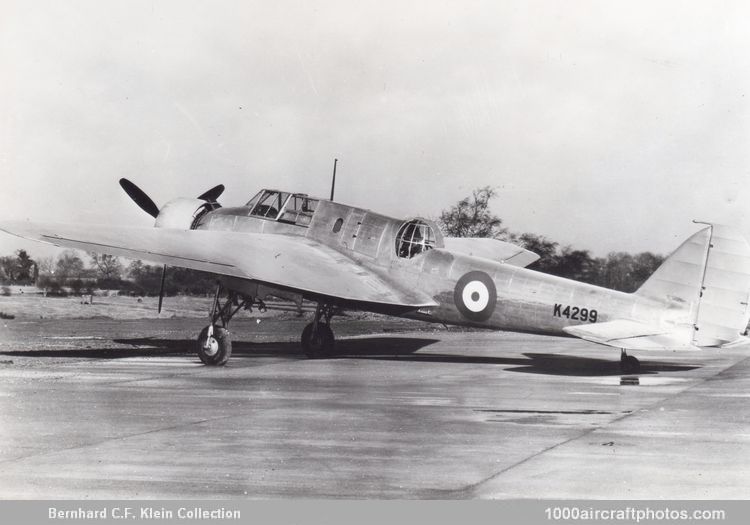10/31/2011. Remarks by Johan Visschedijk: "While the emphasis was on the introduction of new long-range bombers with twin engines, as the Handley Page Hampden and Vickers Wellington, for the re-equipment of the RAF under the Expansion Program, the smaller type was not omitted from the Air Ministry's requirements, and Specification P.27/32, issued in April, 1933, to produce an experimental two-seat, single-engine, day bomber to carry a 1,000 lb (454 kg) bomb load at 200 mph (322 mph) for a distance of 1,000 mls (1,609 km), resulted five years later in one of its progeny joining the Service.
A project by Frank Barnwell, the Perseus-powered Bristol Type 136, was abandoned, and so was the Hawker P.27/32 designed by Sydney Camm and tendered during 1933. Two other tenders, however, resulted in prototypes, the Armstrong Whitworth A.W.29 and the Fairey Battle.
John Lloyd's design for Armstrong Whitworth was based on the use of the supercharged 880 hp Armstrong Whitworth Tiger VIII radial engine, housed in a cowling of very broad chord and driving a de Havilland three-blade, variable-pitch propeller. The A.W.29 demonstrated once again its designer's current predilection for the inordinately thick wing (as in the Whitley), evolved in this case around a box girder main spar 23 in (0.58 m) deep and 35 in (0.89 m) wide at its maximum section. To the rear of this spar, fabric was used as the surface covering, and the same medium was employed to clad the tail unit.
The enormously thick, tapered wings were joined to the relatively slim all-metal fuselage at the low mid-wing position, but, by virtue of the center section's depth, extended well above the datum line. The fairly small wheels retracted on lengthy struts rearwards into the wings, but projected slightly. The pilot's seat was in a good position above the leading edge, and his gunner, equipped with a single Lewis gun, was housed in a rotating Armstrong Whitworth cupola some distance aft at the trailing edge. Bomb aiming was carried out by the gunner from a prone fuselage position, the missiles being stowed internally in the wings with supplementary bays inside the fuselage.
In designing the A.W.29, which achieved a maximum speed of 232 mph (373 kmh) at 14,000 ft (4,267 m), John Lloyd made provision also for the machine to act as a torpedo-carrier, the weapon being attached to fittings under the belly. The prototype's (s/n K4299) maiden flight, with Squadron Leader C.K. Turner-Hughes at the controls, took place from Baginton on December 6, 1936. Soon after the first flight the prototype was damaged during a forced landing with retracted landing gear. It was never repaired and eventually scrapped in August 1940."
